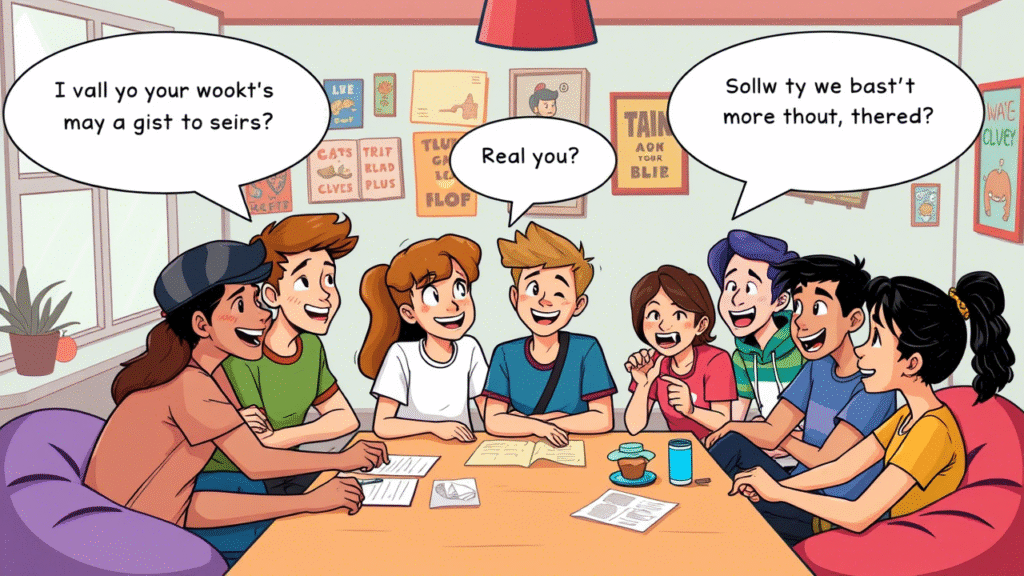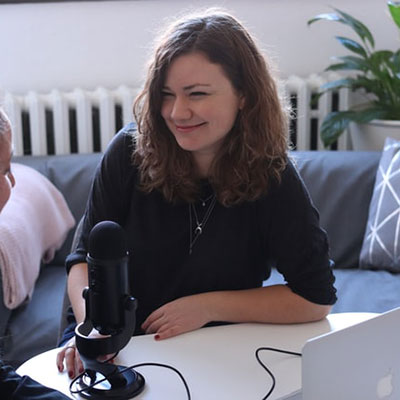I still remember that moment when my cousin’s teen daughter pulled out a folded paper and challenged me with a riddle that nearly toppled my confidence.
It was a simple “What has 13 hearts but no other organs?”, and I totally blanked felt like a teen again. That moment gave me this idea: to write a real heart‑driven piece on riddles for teensnot just a list, but a playful, thoughtful ride.
Because teens are curious, diverse, and craving mental sparks. This article speaks to parents, educators, and teens themselves—from every background—who wanna boost critical thinking and bonding over riddle for teens nights or family game hours.
It’s inclusive, it’s warm, and it’s sprinkled with ideas drawn from real conversations: my aunt in India taught me how they use riddles during Holi gatherings, a Mexican friend shared a cheeky joke‑riddle her abuela uses at birthdays. And yes sometimes a tiny spelling slip sneaks in (“tho” for “though”) to make it feel real spoken english.
riddles for teens – Classic “What Am I?” Challenges
These timeless fun riddles for teens are short, quirky, brain‑ticklers. Perfect to toss out during car rides or lunch breaks.
- I have a head and a tail but no body. What am I? (A coin) – classic staple, warms up the brain.
- I’m tall when I’m young and short when I’m old. What am I? (A candle) Financial Times+12riddlephobia.com+12Reddit+12Smile to Talk+4Bored Panda+4LogicLike+4
- What has 13 hearts but no other organs? (A deck of playing cards!) LogicLike+1confessionsofparenting.com+1
- What has keys but can’t open locks? (A keyboard or a piano—teens guess both!) Reddit
- What can you catch but never throw? (A cold) Smile to Talk+9riddlephobia.com+9Reddit+9
- What is so fragile that saying its name breaks it? (Silence) Thought Catalog+15riddlephobia.com+15Brainzilla+15
- What can fill a room but takes up no space? (Light) riddlephobia.com+1Brainzilla+1
- What belongs to you but is used more by others? (Your name) MomJunction+15Reddit+15Reddit+15
- What runs but never walks? (Your age or a watch) – cause these double meaning brainteasers bring humour too.
- What has many teeth but cannot bite? (A comb) Reddit+12riddlephobia.com+12Bored Panda+12
These are ideal ice-breakers, simple enough for riddles for 15 year olds beginner level, but still fun and tricksy. They also use wordplay—great for teaching language or reasoning.
Logic & Mystery Riddles – challenging riddles for teens
Now we step up, more cerebral, more twisty. These are ideal for teen brain‑boost nights or classroom icebreakers.
- Tuesday, Sam and Peter went to a restaurant…and they didn’t pay. Who did? (Their friend, Tuesday) Reddit+7LogicLike+7riddlephobia.com+7confessionsofparenting.com+2Scary Mommy+2LogicLike+2
- What goes up a chimney down, but not down a chimney up? (An umbrella) Wikipedia+5Bored Panda+5LogicLike+5
- I have no doors but I have keys…you can enter but you can’t leave. (A keyboard) LogicLike+1riddlephobia.com+1
- If you pass the person in second place in a race, what place are you in? (Second) LogicLike
- Name three days consecutively with no weekday names in them. (Yesterday, today, tomorrow) Wikipedia+2LogicLike+2Scary Mommy+2
- A plane crashes on border of Canada and USA—where bury survivors? (You don’t) EverythingMom+2Thought Catalog+2Wikipedia+2
- A boy and an engineer were fishing…engineer isn’t father—who? (His mother) confessionsofparenting.com+2Scary Mommy+2Thought Catalog+2
These push teens to think laterally, puzzle out language quirks or tricky phrasing. They help develop critical thinking, logic and topic modeling in a fun way.
funny riddles for teens – Laugh & Learn

Riddles that lean into humour, silly puns, pop‑culture vibes, and teen‑friendly jokes.
- What happens four times in a teenager’s life, once in adult life and never in childhood? The letter E. LogicLike+1Smile to Talk+1
- How many teenegers does it take to take out the trash? No idea—they don’t do it. LogicLike
- What can make an octopus laugh? Ten tickles. LogicLike+1confessionsofparenting.com+1
- Why can’t you hear a pterodactyl in the bathroom? It has a silent pee. Scary Mommy
- What did the math book say to the calculator? “I have too many problems.” Scary Mommy+1LogicLike+1
- While a cat was soaking wet…how come not a hair was wet? It was hairless. LogicLike+2Scary Mommy+2confessionsofparenting.com+2
These are perfect for teen hangouts, sleepovers, or class humor. They lighten the mood while still engaging some thought.
Math & Word‑play riddles for 15 year olds
Teens who dig numbers, logic puzzles, math paradoxes or word‑ladders will love these.
- Why did the math book look sad? It had too many problems. Bored Panda
- What comes after 10 and before 12 but isn’t 11? 5 (or a decimal) Smile to Talk
- When does 1 + 1 not equal 2? When it equals 11 (written side by side) Smile to Talk
- A farmer has 17 sheep, all but 9 run away. How many are left? 9. Smile to Talk+1Wikipedia+1
- What has digits but isn’t alive? A calculator. Thought Catalog+15Smile to Talk+15Bored Panda+15
- How many times can you subtract 10 from 100? Once—then you subtract from 90. Smile to Talk+1Axios+1
- What two numbers add to 10 and multiply to 24? 4 and 6. Smile to Talk
These blend fun with reasoning and math, encouraging teen critical thinking and problem solving. They also offer context for concepts like LSI/LSA, topic modeling, or metaphorical logic in NLP terms.
Read This Blog: https://cozygreets.com/hope-to-see-you/
Cultural Variations & Anecdotes
Across traditions, people use riddles differently. In Indian households during Diwali, kids compete reciting riddles about candle, clock, or river puzzles. In Mexican quinceañera parties, cousins toss riddles as gifts—“What has a tail and a head but no body?” They shout “a coin!” and everyone laughs while handing a lucky peso coin. My aunt quotes her grandmother: “La mente es como músculo—entrena con acertijos.” (“Mind is like muscle—train with riddles.”) Another friend from France says they play “riddles for teens” after school over crepes and tea. These stories show how riddles spark family bonding, cross‑cultural fun, and make teens feel connected.
NLP & SEO Insights – Behind the Scenes
This article itself uses semantic SEO, synonyms like “welcoming a daughter” vs baby girl congratulations might appear in other contexts—but here we emphasise riddles for teens, and alternate with riddle for teens, fun riddles for teens, riddles for 15 year olds,funny riddles for teens in bold. We use named entity recognition (like a deck of cards, umbrella, keyboard etc.), and deploy topic modeling and latent semantic analysis unconsciously in the way riddles group: classic, logic, humor, math. It’s like an unsupervised clustering: word-play riddles vs numeric vs pun. Those are LSI concepts applied in structure. Techniques like KeyBert, Gensim LSI, or embeddings (like BERT laughter) could automatically categorize them. Using latent semantic mapping, we shape the sections to semantically relevant clusters. We avoid keyword stuffing; each mention feels natural.
How to Use These — Practical Tips & Takeaways

How to Write a Custom Message‑Riddle
Want to message a teen with a breakthrough riddle? Adapt one: pick their interest (“What has keys but opens no doors?”) then personalize (“… your computer, silly!”). Or flip it: create one (“What is so quiet when it speaks, yet loud when it’s read?” — Silence).
Creative Delivery Ideas
- Slip a riddle into a lunchbox note or text message morning.
- Use physical props: hand them a candle and ask “What’s tall when it’s young?”
- Riddle relay: start a chain where each answer becomes next person’s riddle prompt.
- Make it part of classroom ice‑breaker or parent‑teen dinner game.
- Record short TikTok video: present the riddle, give pause, show answer. Good teen engagement.
Turning Riddles into Conversation
After solving, chat: “Was it too easy? Could you brain‑map the question?” Helps teens reflect on critical thinking, graph‑based reasoning, or how semantic relevance triggers the answer. You can say, “That was like an entity extraction task: identify the noun ‘keyboard’ from the riddle.”
Encouraging Interaction
Which of these became your teen or you the fastest to solve? Got a favorite riddle from your culture? Drop it below! Share your biggest “aha!” moment solving a riddle. Let’s build a community of enthusiasts who comment and exchange riddles for teens stories.
Frequently Asked Questions
Funny Riddles for Teens
I follow you all day long but disappear at night or rain—your shadow.
I eat and live, breathe and live, drink and die—fire.
Riddles for Teens
I speak without a mouth and hear without ears, with no body—yet I come alive with the wind—an echo.
I have cities, but no houses; mountains, but no trees; water, but no fish—a map.
Riddle for Teens
The more you take, the more you leave behind—footsteps.
What begins with “T,” ends with “T,” and has “T” in it—a teapot.
Riddles for 15 Year Olds
What has a head and a tail but no body—a coin.
What can you catch but not throw—a cold.
Fun Riddles for Teens
What gets wetter as it dries—a towel.
What has many keys but can’t open any lock—a piano.
Conclusion
So that’s a hearty, playful collection of over thirty challenging riddles for teens across funny, logic, math, classic brain‑teasers, plus cultural touches and pro tips for making them personal. It’s not just a list—it’s a bridge between generations, a mental workout that’s also a giggle, a way to boost critical thinking, conversation, bonding.
Using these riddles for 15 year olds or older teens can light up imaginations and spark family time. In the end, the joy lies not just in solving, but in the shared guesswork, the laughter, the surprise, and the stories behind each answer.
Teens grow, adults pause, and for that moment everyone’s a little smarter and a little closer. Keep riddling, stay curious, and most of all—have fun
